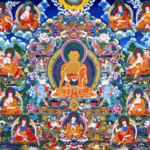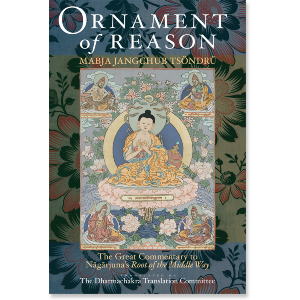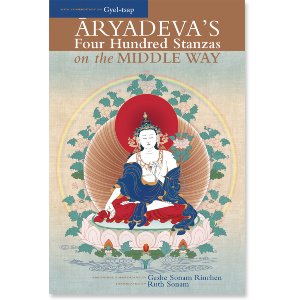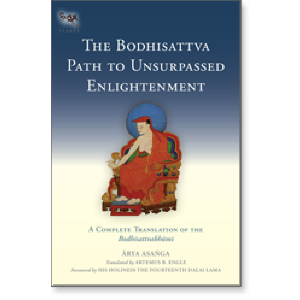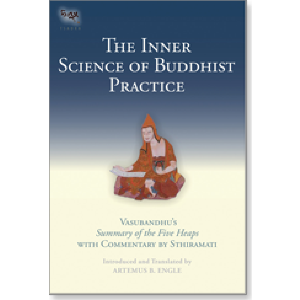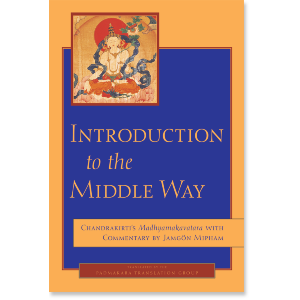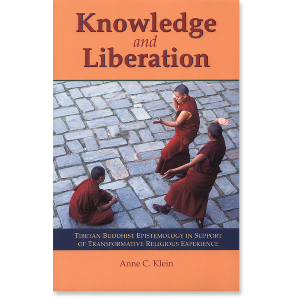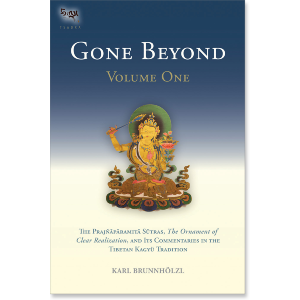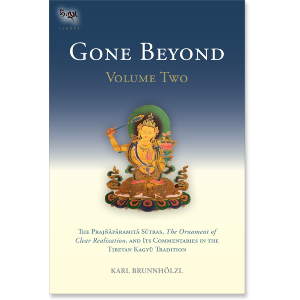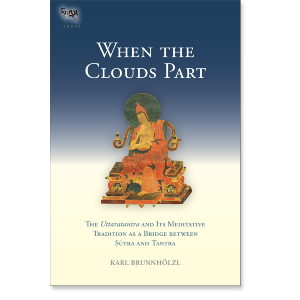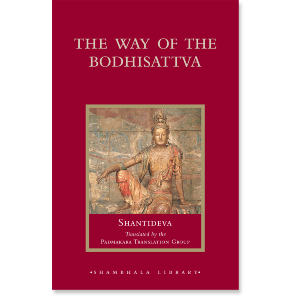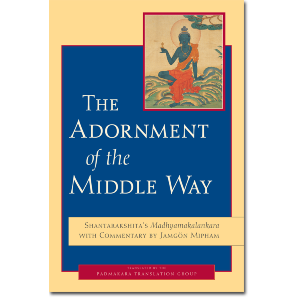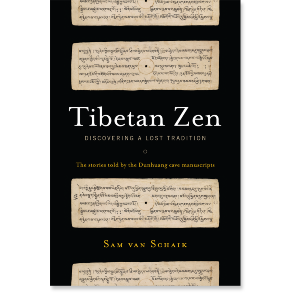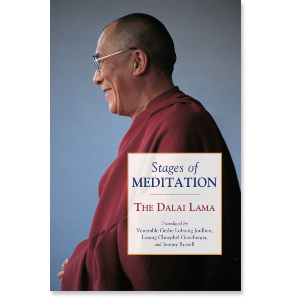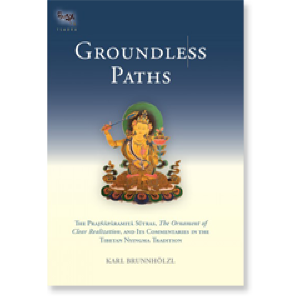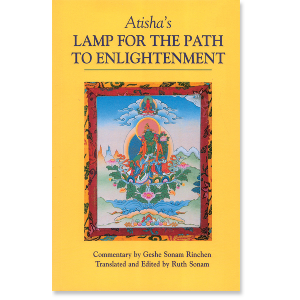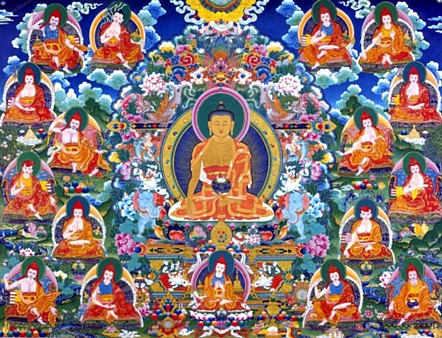
His Holiness the Dalai Lama has often said that Tibetan Buddhism is none other than the Buddhism of India in the tradition of Nalanda, the great center of Buddhist learning that was located in present-day Bihar, India.
Many of the greatest masters and scholars in Indian Buddhism resided-and often presided-at this monastic center of learning which in its heyday included thousands of monks, dozens of temples and an enormous library. While we do not know with certainty that all of the seventeen masters below physically stayed at Nalanda, there is no doubt that their teachings and impact became fully integrated into the teachings and presentations of Buddhist thought there.
Traditionally, Tibetans have referred to the Six Ornaments of India (Nagarjuna, Aryadeva, Asanga, Vasubandhu, Dignaga, and Dharmakirti) and the Two Supreme Ones (Gunaprabha and Shakyaprabha).
The categorization of seventeen described below was put together by His Holiness and expands upon these eight. While it does not include some of the great Nalanda masters whose genius still resounds in Buddhist teachings throughout the world - Naropa, for example - it is an important list of the brilliant scholar - adepts whose innovations in explaining the truth that the Buddha revealed continue to benefit us today.
These seventeen masters are vitally important because their writings are all based on real meditative experience. Their legacy of texts and teachings that came out of this experience forms the very backbone of understanding that is the basis for establishing present day practitioners with the correct view that enables us to make progress on - and complete - the path to enlightenment.
Our Great Master's Series is a guide to the works of each master, with a focus on what is available from Shambhala and Snow Lion Publications, though we will include important works that our friends at Wisdom Publications, KTD, and others are publishing.
The order below has been changed from how it has been presented elsewhere to that of a more chronological one, which interestingly reveals how these great minds were often contemporaneous with each other and focused on very different areas of thought in Buddhist philosophy.
1. Nagarjuna is considered the first of the seventeen panditas of Nalanda. While Western scholars generally assume there were two Nagarjunas separated by several centuries, received tradition holds him as a long-lived master who was critical in revealing the Mahayana teachings and sutras, elucidating the meaning of emptiness and the Madhyamaka view in particular, and being a great master of tantra. His works are typically divided into three groups: his praises, his speeches, and works on reasoning. His most famous text is from the latter category; entitled Treatise on the Middle Way, it is translated in The Ornament of Reason.
2. Aryadeva (3rd century) was Nagarjuna's student and while many Western scholars once again identify two, the Tibetan tradition identifies him as a single master, active in the third century CE. At Nalanda, he was famous for converting many followers of brahminism to the Buddhist view. He is also said to be identical with one of the 84 mahasiddhas, Karnari. He is most famous for his Four Hundred Stanzas of the Middle Way which is a commentary on Nagarjuna's Treatise on the Middle Way that explains the paths associated with conventional truths.
Aryadeva's Four Hundred Stanzas on the Middle Way
$39.95 - Paperback
3. Asanga (320-390), born in present day Peshawar in Pakistan and the older brother of Vasubandu, he is often considered the father of Yogachara, though his texts cannot be so neatly categorized. While initially studying in the Sarvastivadin tradition, he adopted the view and practice of Mahayana. He spent 12 years in a cave, after which he had visions of Maitreya who brought him to Tushita heaven and gave him the teachings that form the five Maitreya texts. Other famous works include his commentary on Abhidharma from a Mahayana point of view as well as his Bodhisattva Paths and Bhumis and the Compendium of Mahayana.
The Bodhisattva Path to Unsurpassed Enlightenment
$59.95 - Hardcover
4. Vasubandhu (4th century, possibly into the 5th), the brother of Asanga, is most famous for his Treasury of Abhidharma. Vasubandhu's classic short text on abhidharma, with commentary by Sthiramati has been translated by Artemus Engle in the book The Inner Science of Buddhist Practice: Vasubandhu's Summary of the Five Heaps with Commentary by Sthiramati, one of the most detailed presentations of mind and mental factors. He also presents Vasubandhu on Abhidharma in this short video discussing the skandhas, ayatanas, and dhatus, or in other words an explanation of what is presented in the Heart Sutra. Later, under the influence and guidance of Asanga, he adopted the view and practice of Mahayana.
The Inner Science of Buddhist Practice
$34.95 - Hardcover
5. Buddhapalita (470-540) is known as an early systematizer of what later writers termed the Prasangika Madhyamaka, which uses a technique of describing the absurd consequences of holding any view in an attempt to describe reality. While I am not aware of any complete translation of his works - which include a commentary on Nagaruna's Root Verses of the Middle Way - his ideas are succinctly encapsulated in the introduction of Introduction to the Middle Way.
Introduction to the Middle Way
$32.95 - Paperback
6. Dignaga (480-540) was a monk who was an early articulator of Buddhist logic, using syllogisms as a method for arriving at what he saw as the two types of valid cognition, that is, direct perception and inference. His most famous work is his Compendium of Valid Cognition and while a complete translation of this is not available in English, the ideas presented therein are explored in depth in Knowledge and Liberation and many other works.
$34.95 - Paperback
7. Bhavaviveka (500-570 CE) is considered the godfather of what later writers term the Svatantrika Madhyamaka, in contrast to the Prasangika variant of which he was critical. His ideas are succinctly encapsulated in the introduction of Introduction to the Middle Way. While we are not aware of a complete English translation of this yet, his ideas are explored in depth in many works.
Introduction to the Middle Way
$32.95 - Paperback
8. Arya Vimuktisena (6th century), building on the work of Dignaga and later Madhyamaka teachers, wrote the first - and very important - commentary on the Ornament of Clear Realization (one of the Five Maitreya texts) that explicitly made the connection between it and the Perfection of Wisdom sutras. Link to video sharing: The Tibetan Commentaries on the Prajaparamita, Perfection of Wisdom.
$54.95 - Hardcover
$44.95 - Hardcover
$49.95 - Hardcover
9. Chandrakirti (600-650) built on the works of Nagarjuna and Buddhapalita, further elucidating them in his Introduction to the Middle Way. His work is the bedrock of the Prasangika viewpoint.
Introduction to the Middle Way
$32.95 - Paperback
10. Dharmakirti (600-670) built on the work of Dignaga and was a seminal figure in articulating what constitutes valid cognition. Dharmakirti argued that improvement of spiritual qualities were not limited by or to human nature. More can be read on this in the article Dharmakirti on Unlimited Spiritual Qualities. More can be read about Dharmakirti's theory of existance in the book Is Enlightenment Possible?: Dharmakirti and rGyal tshab rje on Knowledge, Rebirth, No-Self and Liberation by Roger Jackson, and by going to this published article.
11. Shantideva (8th century) is best known as the author of The Way of the Bodhisattva. For an article on Shantideva and his texts, see here.
$24.95 - Hardcover
12. Shantarakshita (725-788) was born into the royal house of Zahor in Bengal and became a great scholar at Nalanda who was later instrumental in establishing Buddhism in Tibet. His Adornment of the Middle Way is one of his more famous works. This work, later categorized as Yogachara Svatantrika Madhyamaka, builds on the work of his predecessors and presents what many consider to be one of the most important texts to study to receive the full and balanced understanding of how the various philosophical strains within Mahayana Buddhism coexist.
The Adornment of the Middle Way
$39.95 - Paperback
13. Kamalashila (740-795), a student of Shantarakshita, went to Tibet and was part of the great debate at Samye with Moheyan, a Chan master, in which Kamalashila is said to have debated and defeated him, though more about this episode is explained in our forthcoming Tibetan Zen: Discovering a Lost Tradition. His most famous works are three Stages of Meditation texts, some or all of them having been written in the wake of this famous debate. A translation based upon the middle section of the Bhavanakrabya by Kamalasila, is explained in the book Stages of Meditation: Training the Mind for Wisdom by H.H. the Fourteenth Dalai Lama and Kamalashila.
$24.95 - Paperback
$16.95 - Paperback
14. Haribhadra (9th century), who lived around the same time as Kamalashila and was possibly a student of Shantarakshita, is best known for his commentaries on the Perfection of Wisdom (his is still the most used commentary for this subject in the Tibetan tradition) and the Ornament of Clear Realization. While complete English translations of his works are not yet available, his work is treated in depth in the Gone Beyond volumes on Prajaparamita and the Ornament of Clear Realization. His ideas are explored in depth in many works which will be covered in a subsequent post dedicated to him.
$54.95 - Hardcover
$44.95 - Hardcover
$54.95 - Hardcover
15. Gunaprabha (7th century) is most famous for his work on the vinaya in which he abridged the massive vinaya texts of the Mulasarvastivadins into a text, Vinayasutra, that remains the most important work on discipline in the Tibetan monastic traditions.
16. Shakyaprabha is another master revered for his work on vinaya. He and Gunaprabha are known in Tibet as the “Two Supreme Ones”.
17. Atisha (982-1054) was the great Bengali master who, after residing at Vikramashila and Nalanda, later went and studied with Serlingpa in what most assume to be Indonesia before coming to Tibet to reinvigorate Buddhism there after the so-called dark period. A great tantric master, Atisha is most famous for founding the Kadam lineage in Tibet emphasizing innovative techniques of Mahayana practice such as lojong or Mind Training and the lamrim or graduated stages of the path as elucidated in his classic Lamp for the Path to Enlightenment.
Atisha's Lamp for the Path to Enlightenment
$19.95 - Paperback
On a final note, I'd like to direct you to a moving and beautiful prayer in homage to these seventeen panditas, composed by His Holiness the Dalai Lama and translated by Adam Pearcey. It is available online from Lotsawa House.

